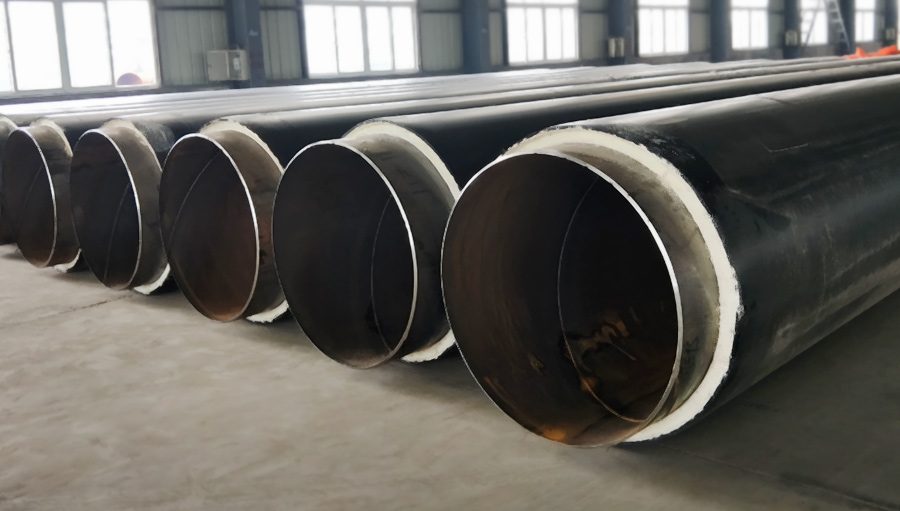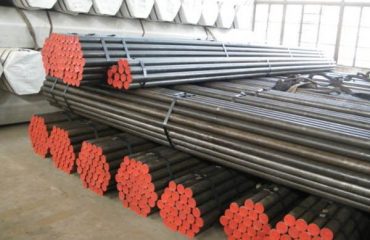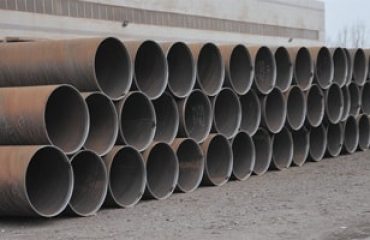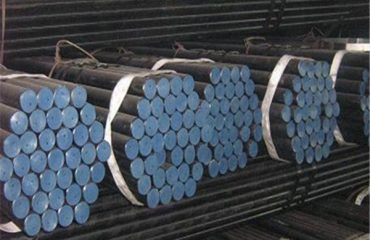
Polyurethane Directly Buried Insulation Pipes: Technical Analysis
Polyurethane directly buried insulation pipes, also known as high-density polyethylene (HDPE) plastic jacket polyurethane foam pre-insulated pipes, are composite structures comprising a working steel pipe for conveying media, a polyurethane foam insulation layer, and an HDPE outer protective jacket. These pipes are widely used in district heating and cooling networks, central air conditioning ventilation ducts, and municipal engineering due to their excellent thermal insulation, corrosion resistance, and durability. This analysis provides a detailed examination of their material properties, technical parameters, performance characteristics, and safety features, supported by data tables and comparative insights.
1. Material Properties and Structural Composition
Polyurethane directly buried insulation pipes consist of three primary layers: a working steel pipe, a polyurethane foam insulation layer, and an HDPE outer protective jacket. The steel pipe, typically made from low-carbon steel (e.g., Q235), serves as the conduit for conveying media such as hot water, steam, or chilled fluids. Its mechanical strength ensures structural integrity under operating pressures, typically ranging from 0.4 to 2.5 MPa, depending on the application. The polyurethane foam layer provides thermal insulation, with a minimum density of 60 kg/m³ to ensure low thermal conductivity (approximately 0.024–0.028 W/(m·K)). The HDPE outer jacket, made from PE80 or higher-grade resin, offers corrosion resistance and mechanical protection, with a density greater than 940 kg/m³.
The polyurethane foam’s properties are critical for thermal performance. The foam must have uniform, fine cells with an average cell size not exceeding 0.5 mm, a closed-cell rate of at least 88%, and a water absorption rate below 10%. These properties minimize heat loss and prevent moisture ingress, which could degrade insulation performance. The HDPE jacket’s tensile yield strength (≥19 MPa) and elongation (≥350%) ensure durability against environmental stresses, while a longitudinal shrinkage rate of ≤3% prevents cracking or deformation. When recycled materials are used, their proportion must not exceed 15%, and they must be clean, undegraded materials from the manufacturing process to maintain quality.
The composite structure is manufactured by sequentially combining the layers through specialized equipment, ensuring a strong bond between the steel pipe, foam, and HDPE jacket. The insulation layer thickness is designed to maintain the outer jacket surface temperature below 50°C during operation, typically ranging from 30 to 100 mm depending on the pipe diameter (50–1200 mm) and application requirements. Table 1 summarizes the key material properties of the polyurethane foam and HDPE jacket.
<td“Density (kg/m³)
| Material | Property | Specification |
|---|---|---|
| Polyurethane Foam | ≥60 | |
| Average Cell Size (mm) | ≤0.5 | |
| Radial Compressive Strength (MPa) | ≥0.3 (at 10% deformation) | |
| Water Absorption Rate (%) | ≤10 | |
| Closed-Cell Rate (%) | ≥88 | |
| HDPE Jacket | Density (kg/m³) | ≥940 |
| Tensile Yield Strength (MPa) | ≥19 | |
| Elongation (%) | ≥350 | |
| Longitudinal Shrinkage Rate (%) | ≤3 |
2. Technical Parameters and Performance Metrics
The performance of polyurethane directly buried insulation pipes is governed by their technical parameters, which ensure thermal efficiency, mechanical stability, and environmental durability. The polyurethane foam’s density (≥60 kg/m³) and closed-cell rate (≥88%) are critical for minimizing heat loss, with thermal conductivity values typically below 0.028 W/(m·K) at 50°C. The radial compressive strength (≥0.3 MPa at 10% deformation) ensures the foam can withstand external loads during burial, such as soil pressure or traffic loads, without collapsing. The water absorption rate (≤10%) prevents moisture ingress, which could increase thermal conductivity or cause corrosion of the steel pipe.
The HDPE outer jacket’s properties are equally important. With a density of ≥940 kg/m³, the jacket provides robust protection against mechanical damage and environmental factors like UV radiation or chemical exposure. The tensile yield strength (≥19 MPa) and high elongation (≥350%) allow the jacket to absorb stresses without cracking, while the longitudinal shrinkage rate (≤3%) ensures dimensional stability during temperature fluctuations. The insulation layer thickness is tailored to the application, typically calculated using heat transfer models to maintain an outer surface temperature below 50°C, ensuring safety and energy efficiency.
Comparative analysis with other insulation materials, such as mineral wool or expanded polystyrene, shows polyurethane’s superior thermal performance due to its lower thermal conductivity and higher closed-cell rate. For example, mineral wool has a thermal conductivity of 0.035–0.040 W/(m·K), significantly higher than polyurethane’s 0.024–0.028 W/(m·K). Table 2 compares key performance metrics of polyurethane foam against alternative insulation materials, highlighting its advantages in district heating applications.
| Material | Thermal Conductivity (W/(m·K)) | Density (kg/m³) | Water Absorption (%) | Closed-Cell Rate (%) |
|---|---|---|---|---|
| Polyurethane Foam | 0.024–0.028 | ≥60 | ≤10 | ≥88 |
| Mineral Wool | 0.035–0.040 | 80–150 | 20–30 | – |
| Expanded Polystyrene | 0.030–0.035 | 15–30 | 2–4 | ≥95 |
3. Features and Advantages
Polyurethane directly buried insulation pipes offer several advantages that make them a preferred choice for district heating, cooling, and municipal applications. First, they significantly reduce project costs due to their prefabricated nature, which minimizes on-site labor and installation time. The high insulation efficiency of polyurethane foam reduces heat loss to 2–3% of the total energy transported, compared to 5–10% for traditional insulated pipes, resulting in substantial energy savings. The HDPE jacket’s corrosion resistance eliminates the need for additional protective coatings, further lowering costs.
The pipes’ excellent insulation and corrosion resistance contribute to a long service life, typically exceeding 30 years under normal operating conditions (e.g., temperatures up to 120°C for hot water systems). The HDPE jacket protects against environmental factors, such as soil moisture or chemical exposure, while the polyurethane foam’s low water absorption rate prevents degradation. The compact design reduces land use compared to traditional trench-based systems, and the direct burial method accelerates construction, minimizing environmental disruption.
Safety is another key advantage. The HDPE jacket’s high mechanical strength and the foam’s ability to maintain low outer surface temperatures (<50°C) reduce the risk of burns or environmental hazards. The pipes are also compatible with multiple laying methods—direct burial, overhead, or trench—offering flexibility for various project requirements. Table 3 summarizes the cost and performance benefits compared to traditional steel pipes with external insulation.
| Pipe Type | Heat Loss (%) | Service Life (Years) | Installation Cost (USD/m) | Maintenance Cost (USD/m/year) |
|---|---|---|---|---|
| Polyurethane Directly Buried | 2–3 | ≥30 | 50–80 | 1–2 |
| Traditional Insulated Steel | 5–10 | 15–20 | 80–120 | 3–5 |
4. Safety and Application Considerations
The safety of polyurethane directly buried insulation pipes is a critical factor in their widespread adoption. The composite structure, comprising an outer HDPE jacket, polyurethane foam insulation, and an inner steel pipe, is designed to withstand operational and environmental stresses. The HDPE jacket, with a tensile strength of ≥19 MPa and elongation of ≥350%, provides robust protection against mechanical damage and corrosion, ensuring the pipe’s integrity in harsh environments, such as acidic soils or high-humidity conditions. The polyurethane foam’s closed-cell structure (≥88%) minimizes water ingress, reducing the risk of corrosion in the steel pipe.
The insulation layer’s ability to maintain an outer surface temperature below 50°C enhances safety by preventing burns during maintenance or accidental contact. This is achieved through precise control of the foam’s thickness, typically calculated using heat transfer equations based on the operating temperature (e.g., 80–120°C for heating systems) and ambient conditions. The pipes’ compatibility with direct burial, overhead, or trench laying methods allows for safe installation in diverse settings, from urban pipelines to industrial facilities.
Quality control during manufacturing ensures safety and performance. The HDPE jacket must be free of defects like cracks, voids, or bubbles, and the polyurethane foam must meet stringent standards for density, cell size, and compressive strength. Non-destructive testing, such as ultrasonic inspection of the steel pipe welds, ensures structural integrity. Table 4 compares the safety features of polyurethane directly buried pipes against alternative materials like glass-reinforced plastic (GRP) jackets.
| Material | Corrosion Resistance | Max. Operating Temp (°C) | Surface Temp (°C) | Service Life (Years) |
|---|---|---|---|---|
| HDPE Jacket | Excellent | 120 | ≤50 | ≥30 |
| GRP Jacket | Good | 100 | ≤60 | 20–25 |
Conclusion
Polyurethane directly buried insulation pipes offer a robust solution for district heating, cooling, and municipal applications due to their excellent thermal insulation, corrosion resistance, and long service life. The combination of a high-density polyurethane foam insulation layer and an HDPE outer jacket ensures low heat loss, mechanical durability, and environmental protection. Technical parameters, such as foam density (≥60 kg/m³), closed-cell rate (≥88%), and HDPE tensile strength (≥19 MPa), are critical to performance. Comparative analysis highlights their advantages over traditional insulation materials and pipe systems, including lower costs, reduced heat loss, and enhanced safety. These pipes meet stringent industry standards, making them a reliable choice for modern infrastructure projects.




You must be logged in to post a comment.